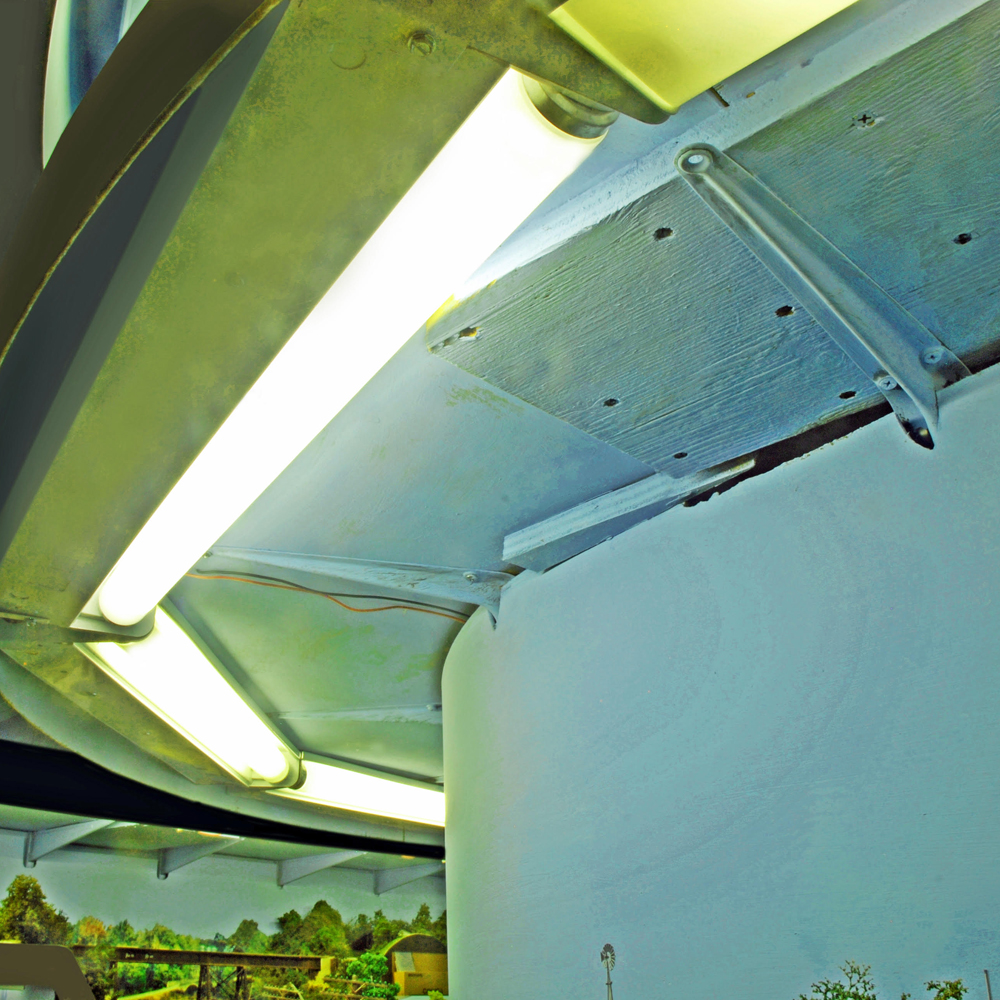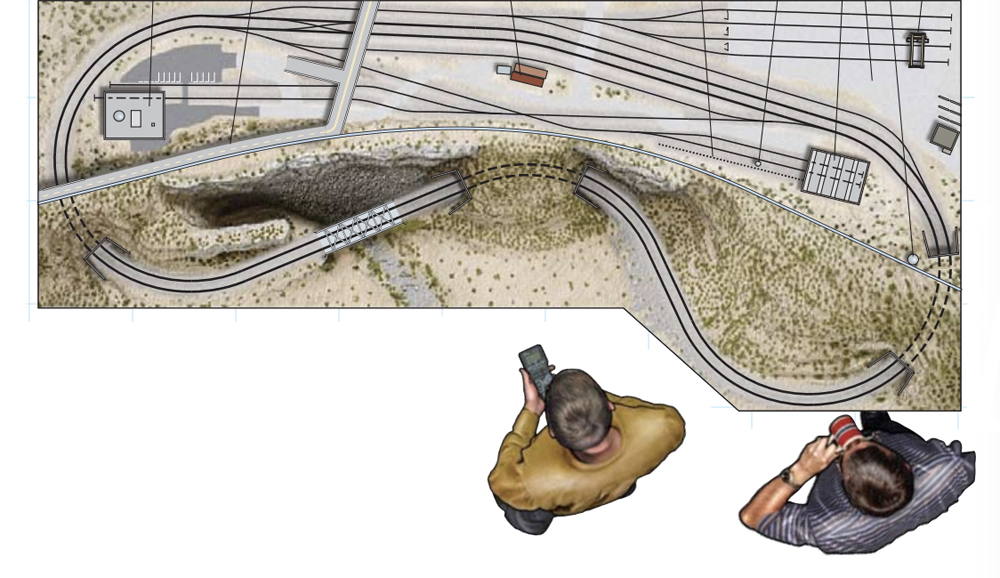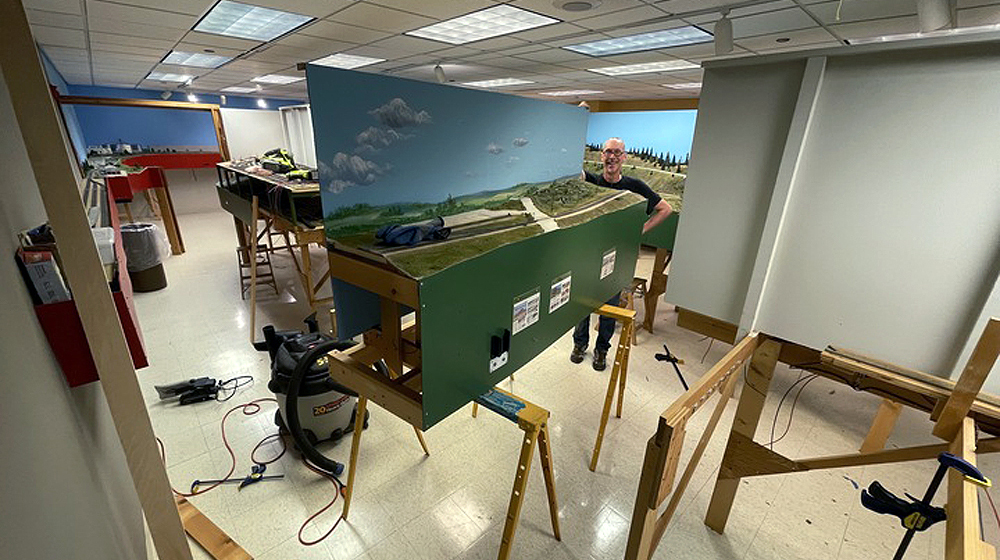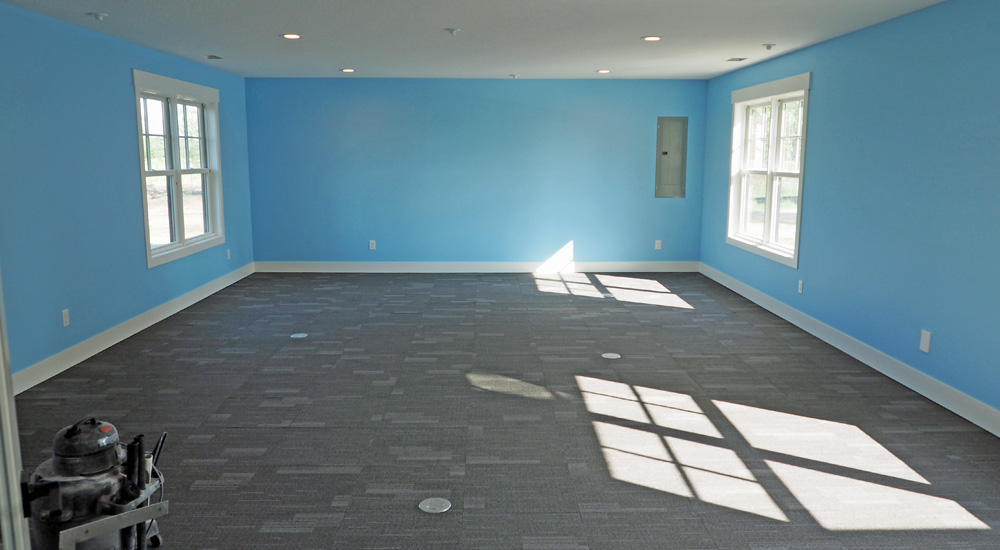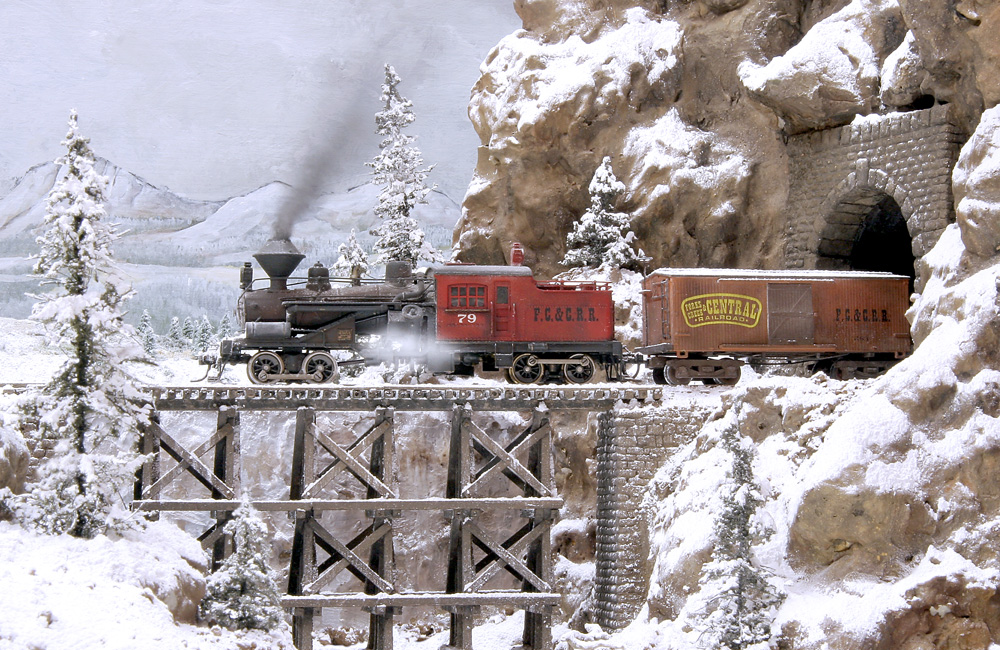
Although most model railroads are set in the verdant summer or colorful autumn, the snow-covered landscapes of a northern winter offer an unmatched visual drama. From paint to grout to powdered stone to commercial modeling products, there are many possible answers to the question of how to model snow on a model railroad layout. Modelers have described a number of these techniques in the pages of Model Railroader over the years. If you want to know how to model snow realistically on your train layout, read on.
Woodland Scenics Soft Flake Snow
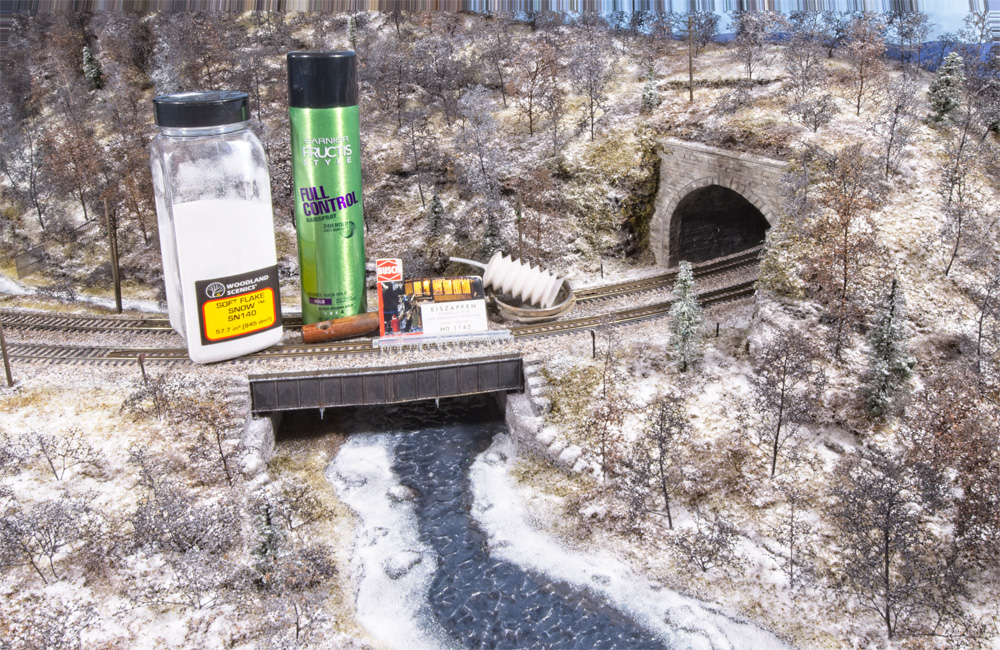
Gary Hoover, who showed off his layout winterization techniques in Model Railroader’s December 2020 and November 2023 issues, uses a commercial product, Woodland Scenics Soft Flake Snow (item no. SN140) to give his HO scale Norfolk & Western layout a chilly look. Since he’s modeling West Virginia in the early spring, he gives his layout only a light dusting of the white stuff after finishing other landscaping. To apply it, he uses an accordion-like puffer from Vintage Reproductions, then fixes it in place with a quick spritz of hairspray. To model water in the winter, he lines the banks with full-strength white glue and sprinkles the Soft Flake Snow onto it. He also applies a few Busch icicles to bridges, tunnel portals, and building overhangs.
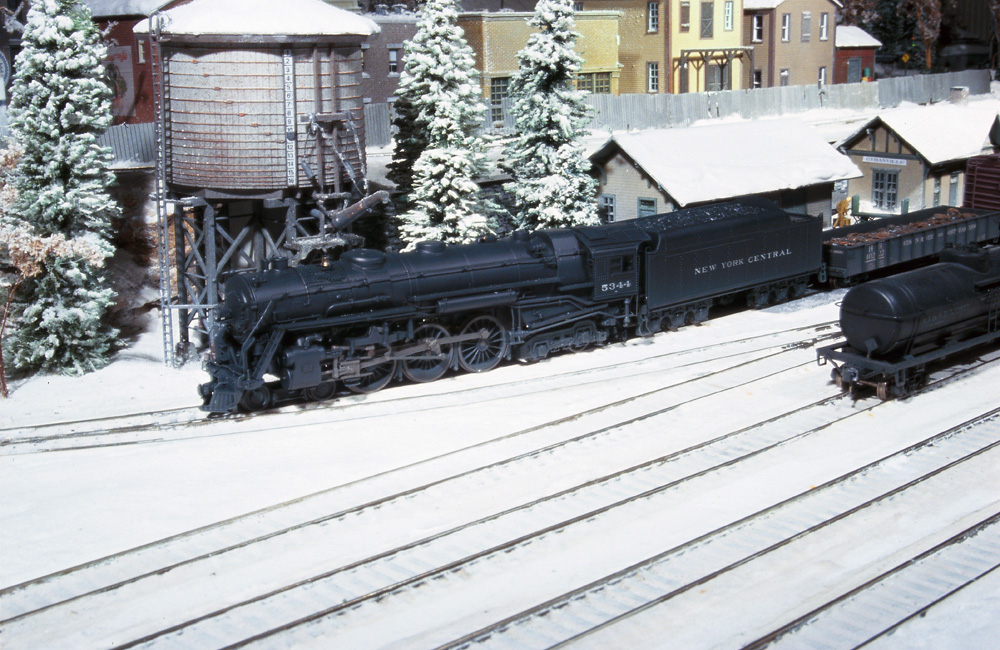
When Bill Nelson hired professional layout construction company RailDreams Inc. to build his Winter Wonderland layout, the RailDreams builders also used Woodland Scenics Soft Flake Snow. But since they wanted a deeper snow pack, they didn’t use Gary’s technique of gluing it down with hairspray. Rather, they molded the terrain from white Sculptamold (a moldable papier-mache-like product), then sprinkled the Soft Flake Snow into the Sculptamold while it was still wet. You can read about Bill’s layout in our February 2009 issue.
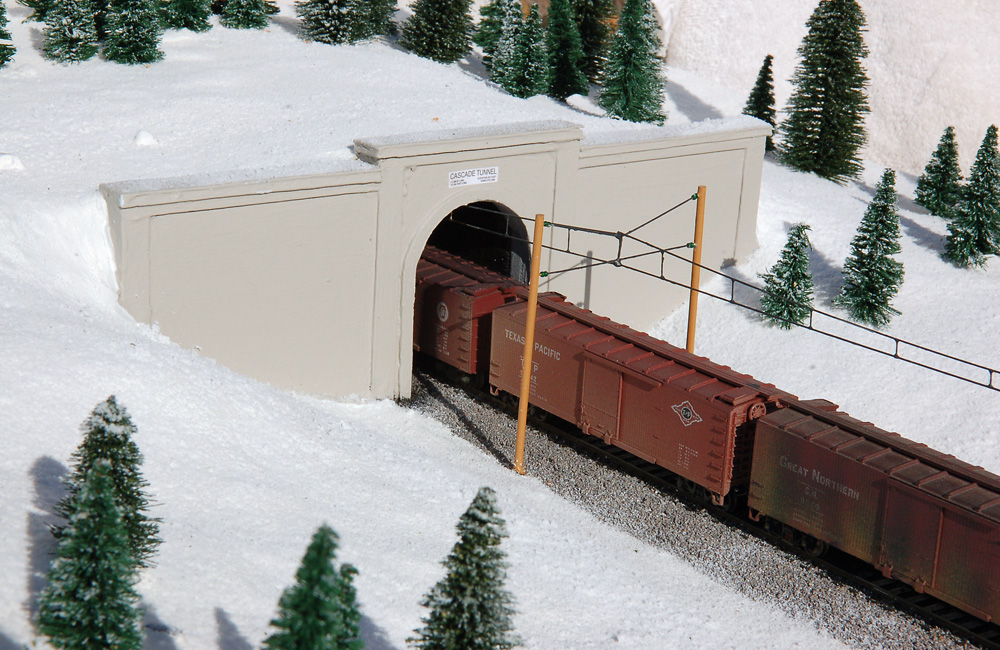
Modeler Jim Rohrbach likewise used the Woodland Scenics product to scenic his HO scale Great Northern diorama, inspired by a well-known railroad painting. He sprinkled the Soft Flake Snow onto his plaster-shell terrain and glued it on with Woodland Scenics Scenic Cement. The picture-perfect results were showcased in our January 2023 issue.
Noch and Busch snow products
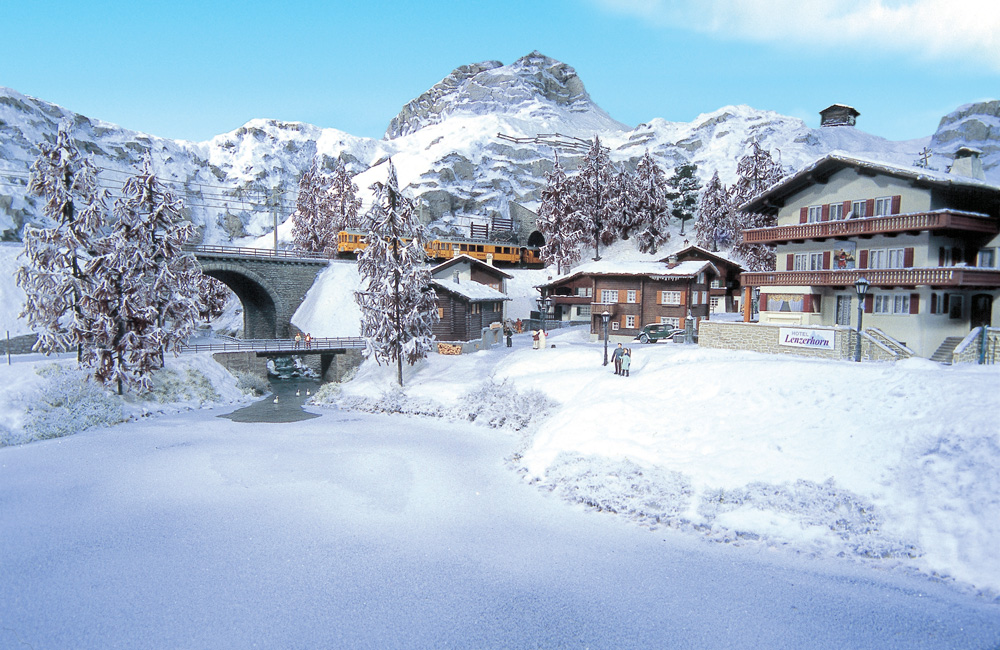
A European professional layout builder, Josef Brandl had to figure out quickly how to model snow scenes when a client hired him to build an Alpine layout. He started by covering the mountainous terrain with plaster painted with white paint in a variety of textures for different effects. But for a more realistic look, he added Noch Powdered Snow and Busch Snow Powder, which can either be applied to a landscape dry or mixed into a paste to model the clumpy drifts cast aside by a railroad snowplow. As you can see above, the results were spectacular. Josef’s techniques are detailed in an article in our February 2007 issue.
Powdered marble
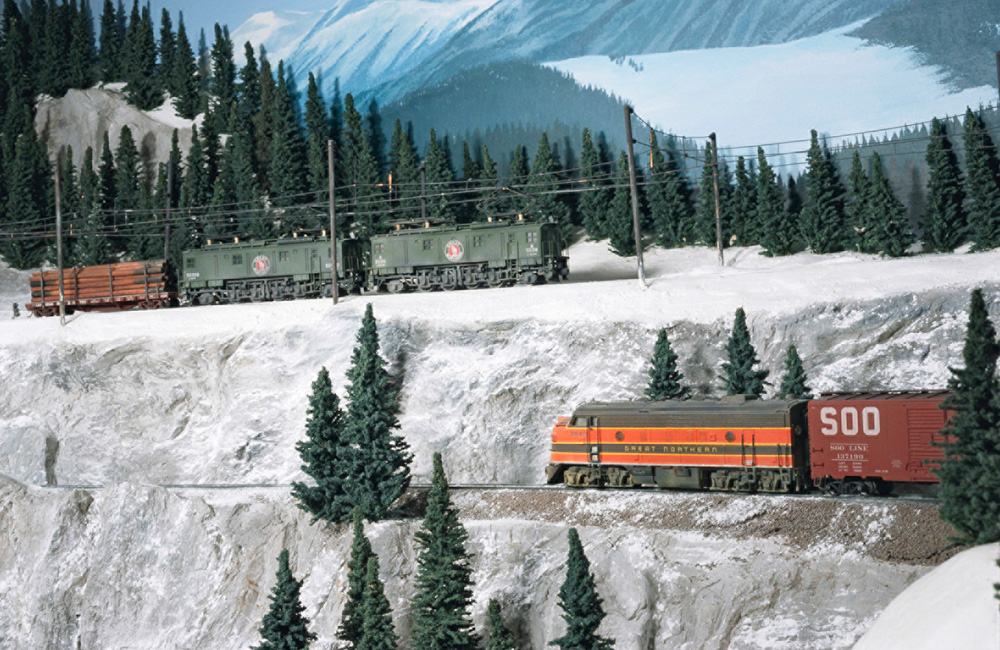
When Scott Kremer started building his HO scale Great Northern layout (see our February 2008 issue), there weren’t a lot of commercial snow products available. Taking a cue from professional swimming-pool builders, he mixed ground marble into his plaster. This natural stone product never yellows. It’s available in grades from fine powder to a coarse sandy texture, which Scott uses to model snow broken up by snowplows.
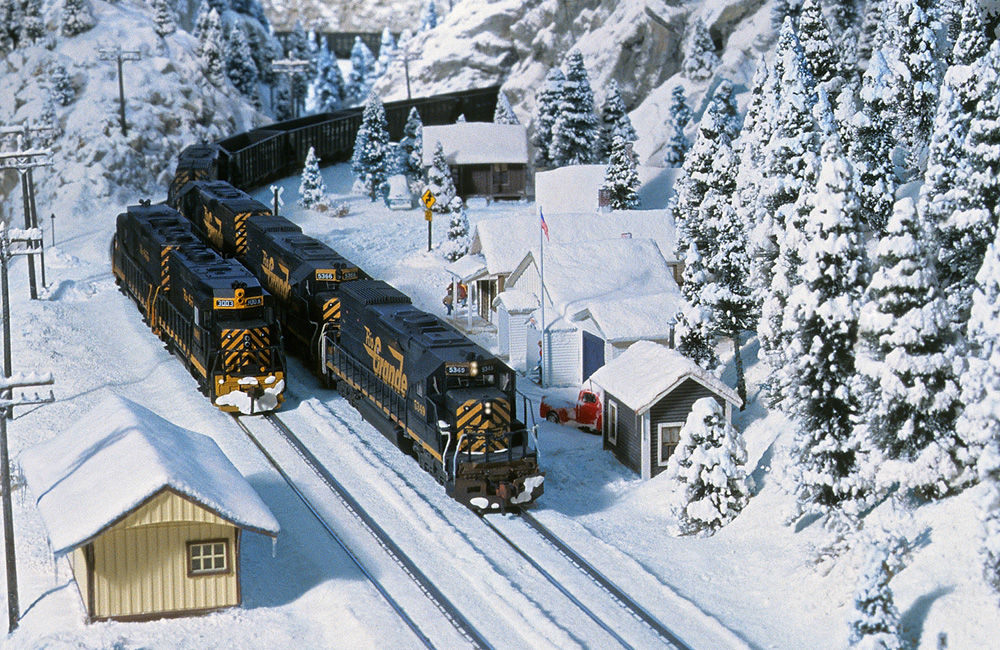
Mike Danneman also used white marble powder from Arizona Rock & Mineral to model snow around the tracks on his N scale Denver & Rio Grande Western layout, which was featured in our December 2011 issue. He didn’t mix it into plaster, but used scenery cement to glue it down after sculpting the plowed snow between and around his N scale rails. But for other parts of the scene, he sprayed the terrain with wet water and sprinkled on dry Hydrocal, a fine-grained plaster product. Once that dried, he followed it with another layer. He glued white flocking onto his pine trees before installing them on the layout.
Unsanded grout
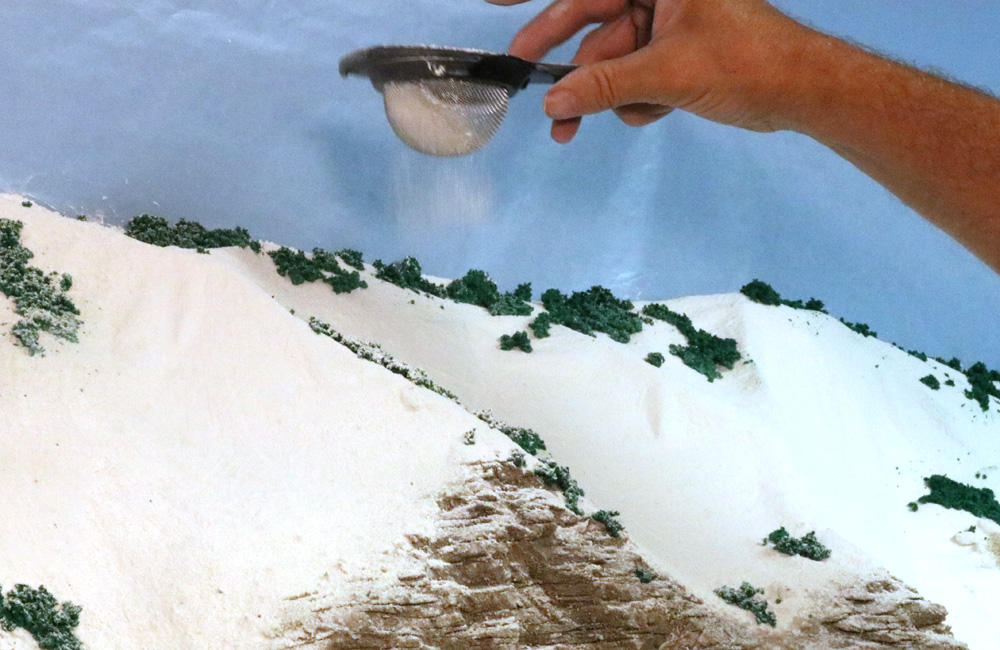
Many of these techniques require using some kind of adhesive, like scenic cement, to secure the snow material to the layout’s surface. But Doug Tagsold found a snow material that is an adhesive — non-sanded grout. Grout, the masonry material used to fill the gaps between ceramic tile, comes in sanded (coarse) and non-sanded varieties. The non-sanded grout is fine enough to represent snow well. Doug simply sprays water on his terrain, then sifts the dry grout powder onto it. One benefit of this technique is the grout only sticks where snow would, not on vertical surfaces like cliffsides. Doug explained his methods in the February 2021 Model Railroader.
Modeling melting snowdrifts
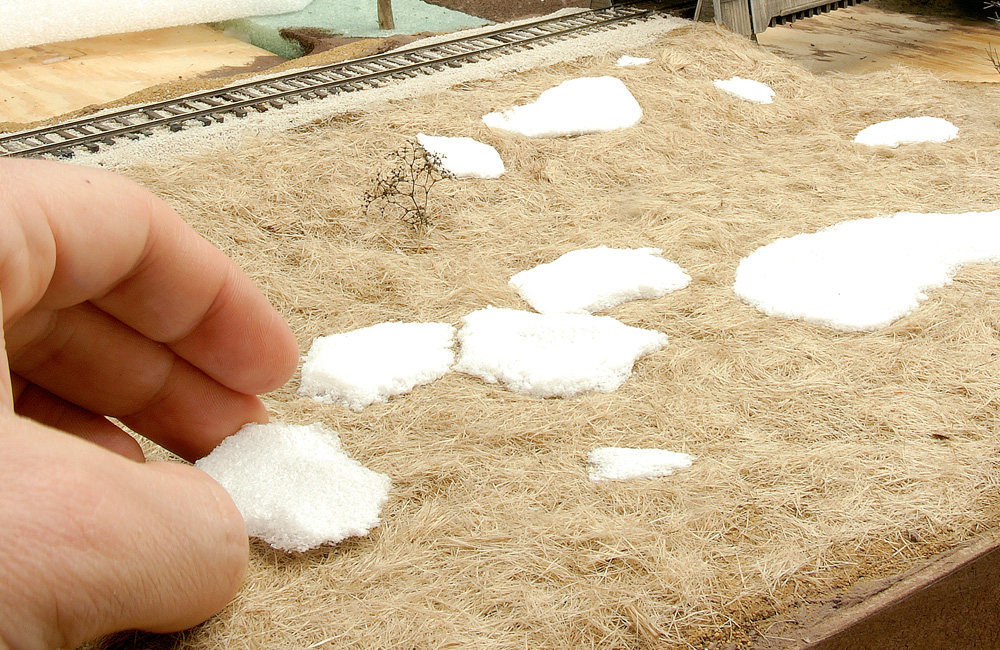
Now you know how to model snow on your model railroad layout. But what if you model the “mud season,” that time of early spring when most of the snow has melted but some deeper drifts remain? In our December 2008 issue, Mike Confalone tells how he tried lots of materials, including those listed above. But he found that although they’re good at representing fresh snow, they don’t look convincing as melting snowdrifts. After pondering the ones he saw out his window, he cut a small chunk from a sheet of white craft foam (not the beaded packing material, but the kind you can purchase in craft stores). It was too porous to look right, but when he crushed it flat between his fingers, it took on the texture and sparkle he wanted. After some rough shaping, he hot-glued the clumps to the matted brown grass of his HO scale diorama.






